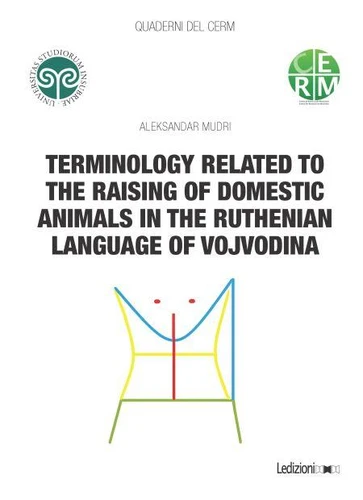Terminology related to the raising of domestic animals in the ruthenian language of Vojvodina
Par :Formats :
Disponible dans votre compte client Decitre ou Furet du Nord dès validation de votre commande. Le format ePub est :
- Compatible avec une lecture sur My Vivlio (smartphone, tablette, ordinateur)
- Compatible avec une lecture sur liseuses Vivlio
- Pour les liseuses autres que Vivlio, vous devez utiliser le logiciel Adobe Digital Edition. Non compatible avec la lecture sur les liseuses Kindle, Remarkable et Sony
 , qui est-ce ?
, qui est-ce ?Notre partenaire de plateforme de lecture numérique où vous retrouverez l'ensemble de vos ebooks gratuitement
Pour en savoir plus sur nos ebooks, consultez notre aide en ligne ici
- Nombre de pages364
- FormatePub
- ISBN1256003358
- EAN9791256003358
- Date de parution28/01/2025
- Protection num.Digital Watermarking
- Taille8 Mo
- Infos supplémentairesepub
- ÉditeurLedizioni
Résumé
The aim of this book is to research the Ruthenian language fragments related to the conceptualisation and categorisation of domestic animals. An interdisciplinary framework of Cognitive Linguistic theories and methodologies were employed, including conceptual metaphor analysis, categorization, and association experiments.
This publication reveals prototypical members of domestic animal categories in the contemporary world image in the Ruthenian language of Vojvodina which is reconstructed through the results of association experiments.
Considering the levels of research that show a petrified image of the world, manifested at the level of nominations and phraseologisms, the shift of certain members of these categories was followed. In that sense, a horse, a cow and a dog changed their places in categories, which also shows a change in human needs from domestic animals from labor-related assistance and providers of food to people's best and most loyal friends.
Considering the levels of research that show a petrified image of the world, manifested at the level of nominations and phraseologisms, the shift of certain members of these categories was followed. In that sense, a horse, a cow and a dog changed their places in categories, which also shows a change in human needs from domestic animals from labor-related assistance and providers of food to people's best and most loyal friends.
The aim of this book is to research the Ruthenian language fragments related to the conceptualisation and categorisation of domestic animals. An interdisciplinary framework of Cognitive Linguistic theories and methodologies were employed, including conceptual metaphor analysis, categorization, and association experiments.
This publication reveals prototypical members of domestic animal categories in the contemporary world image in the Ruthenian language of Vojvodina which is reconstructed through the results of association experiments.
Considering the levels of research that show a petrified image of the world, manifested at the level of nominations and phraseologisms, the shift of certain members of these categories was followed. In that sense, a horse, a cow and a dog changed their places in categories, which also shows a change in human needs from domestic animals from labor-related assistance and providers of food to people's best and most loyal friends.
Considering the levels of research that show a petrified image of the world, manifested at the level of nominations and phraseologisms, the shift of certain members of these categories was followed. In that sense, a horse, a cow and a dog changed their places in categories, which also shows a change in human needs from domestic animals from labor-related assistance and providers of food to people's best and most loyal friends.



